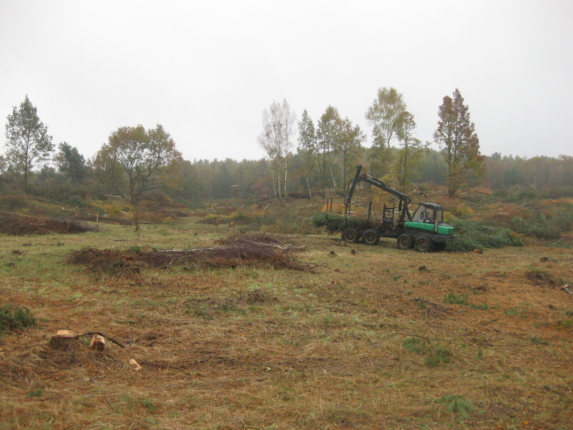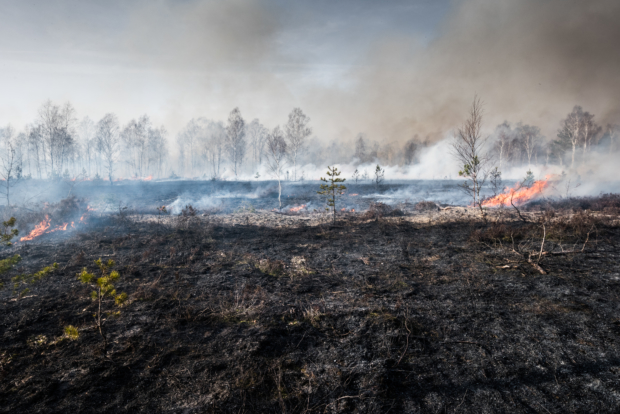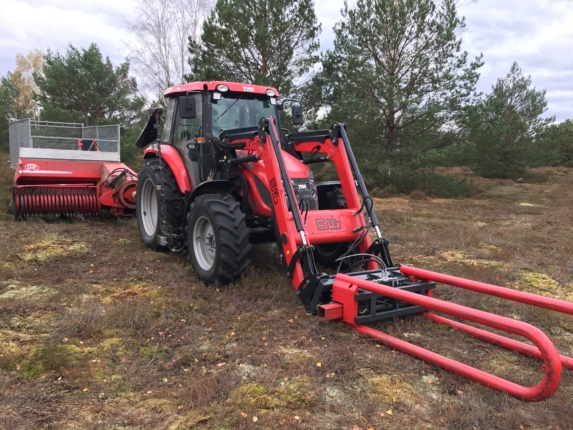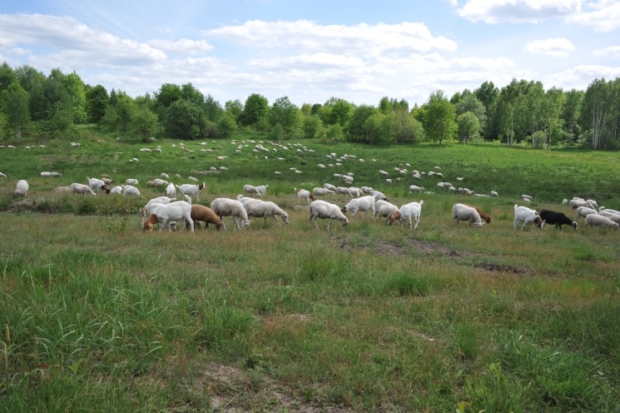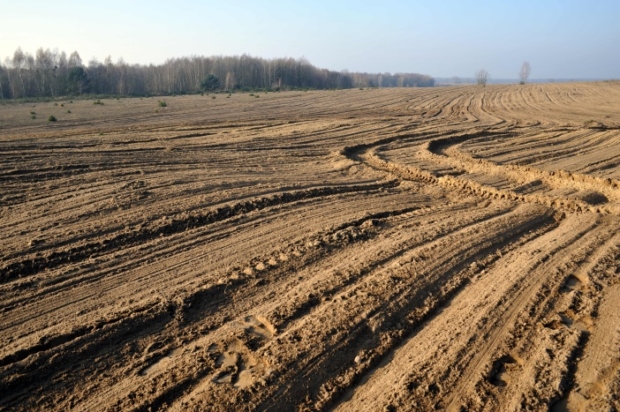

Methods
Tree removal
Left to its own devices, heather landscapes will turn into forests within thirty years. Conventional forestry methods, i. e. working with harvester or chainsaws, will then be necessary to restore the habitat. However, the pure cutting of the trees results in massive cane outgrowth, especially in the case of birch, aspen, black locust or weeping cherry, i. e. a large number of saplings grow from the rootstock, forming a thicket of young trees after only two to three years. Therefore, if possible, all root material must be removed from the soil and the tree stumps must be cleared. In the case of pretty young trees, the method of pulling out the entire tree with stump and stem is recommended.
Controlled burning
This fiery method provides a management close to nature, as heather is a successional biotope of natural fires. Fire destroys the above-ground biomass of the dwarf shrubs as well as the moss layer, and also causes the death of emerged trees. It also stimulates heather seeds to germinate, so that new plants have a chance to come up in addition to the old shrubs surviving through their root systems. Some of the nutrients in the soil are removed from by the fire, but the majority remains on site as ash and continues to be available.
Nevertheless, fire operations are costly to implement, and major precautions must be taken in advance to create firebreaks and assess munitions contamination. Several trained forestry personnel keep the fire under control and firefighting materials on hand in case of emergency. Strict conditions must be met to bring this method into compliance with civil fire regulations as well as nature conservation. In particular, the time of year and weather conditions are crucial, so fire maintenance is carried out in late winter during a prolonged dry and cold period. The wind conditions must also be ideal so that “cold burning” can take place with the highest possible maintenance effect while at the same time minimizing the risk of the fire breaking out. Due to the large effort and the, due to climate change, increasingly smaller time window, this measure is unfortunately only limited feasible.
Mowing and mulching
Mowing can rejuvenate and revitalize over-aged populations. This removes huge parts of the aboveground biomass, allowing the plant to form new branches from the remaining rootstock. The population itself does not change as a result, the old individuals only sprout new. Regeneration occurs purely vegetative – seedlings have little chance of generatively rejuvenating the population, even after mowing, because of the remaining ground cover and moss. The mown material is applied in traditional roofing, where the heather is used for ridges of thatched roofs.
A similar process occurs with mulching. The aboveground plant parts are cut off and shredded at high speed by many, rapidly rotating flails, after which a downstream component collects the material. In terms of nutrient balance, mulching is equivalent to mowing, but requires higher energy. Another negative effect is that small animals have no chance to escape from the cut plant material.
Grazing
In order to maintain heather landscapes, animals are often introduced as landscape managers. Emerging tree seedlings are browsed by sheep or goats at an early stage and thus cannot establish. The heather plant itself is eaten as well and thus stimulated to sprout new shoots. At the same time, cattle trampling provides open soil in the ground and thus possible germination sites for seedlings. Nutrients are hardly reduced in the ecosystem this way however, as the animals’ droppings usually remain in the area.
Schoppern and sod cutting
A technically demanding maintenance method is the removal of the upper humus layer, the so-called Schoppern. If everything on the surface is removed down to the mineral soil, this is called sod cutting. This greatly reduces the nutrient reserves in the soil and allows valuable early succession phases of heather, in which specialised species can use the bare, open conditions before the vegetation becomes denser again.
images & text by Dr. Carsten Neumann; Herbert Riemann; Heinz Sielmann Stiftung: Jörg Fürstenow, Dr. Jörg Müller, images by Volker Gehrmann, Sebastian Hennigs



